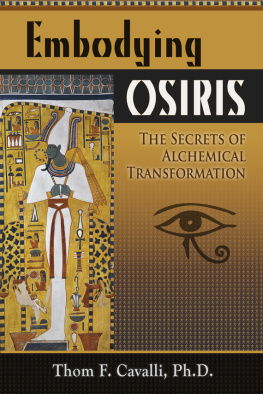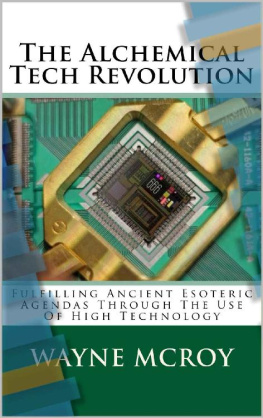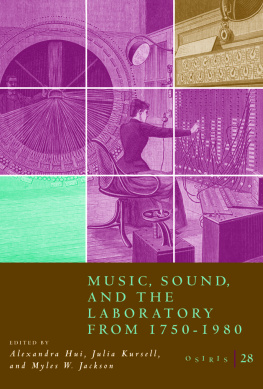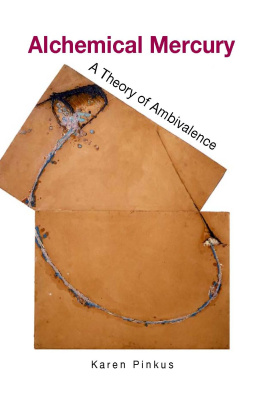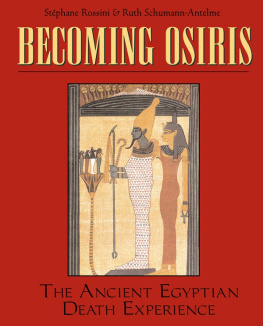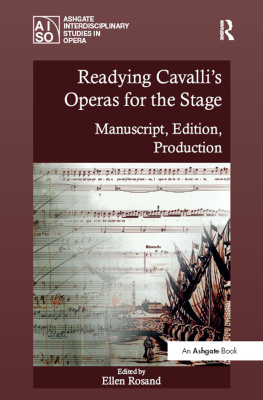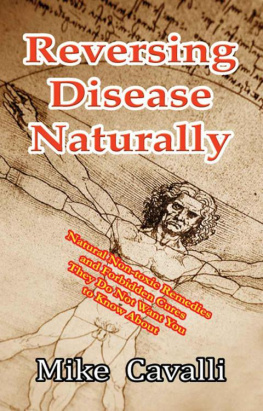Cavalli - Embodying Osiris: the secrets of alchemical integration
Here you can read online Cavalli - Embodying Osiris: the secrets of alchemical integration full text of the book (entire story) in english for free. Download pdf and epub, get meaning, cover and reviews about this ebook. City: United States, year: 2013;2010, publisher: Quest Books, genre: Religion. Description of the work, (preface) as well as reviews are available. Best literature library LitArk.com created for fans of good reading and offers a wide selection of genres:
Romance novel
Science fiction
Adventure
Detective
Science
History
Home and family
Prose
Art
Politics
Computer
Non-fiction
Religion
Business
Children
Humor
Choose a favorite category and find really read worthwhile books. Enjoy immersion in the world of imagination, feel the emotions of the characters or learn something new for yourself, make an fascinating discovery.
- Book:Embodying Osiris: the secrets of alchemical integration
- Author:
- Publisher:Quest Books
- Genre:
- Year:2013;2010
- City:United States
- Rating:4 / 5
- Favourites:Add to favourites
- Your mark:
- 80
- 1
- 2
- 3
- 4
- 5
Embodying Osiris: the secrets of alchemical integration: summary, description and annotation
We offer to read an annotation, description, summary or preface (depends on what the author of the book "Embodying Osiris: the secrets of alchemical integration" wrote himself). If you haven't found the necessary information about the book — write in the comments, we will try to find it.
Cavalli: author's other books
Who wrote Embodying Osiris: the secrets of alchemical integration? Find out the surname, the name of the author of the book and a list of all author's works by series.
Embodying Osiris: the secrets of alchemical integration — read online for free the complete book (whole text) full work
Below is the text of the book, divided by pages. System saving the place of the last page read, allows you to conveniently read the book "Embodying Osiris: the secrets of alchemical integration" online for free, without having to search again every time where you left off. Put a bookmark, and you can go to the page where you finished reading at any time.
Font size:
Interval:
Bookmark:
Embodying
OSIRIS
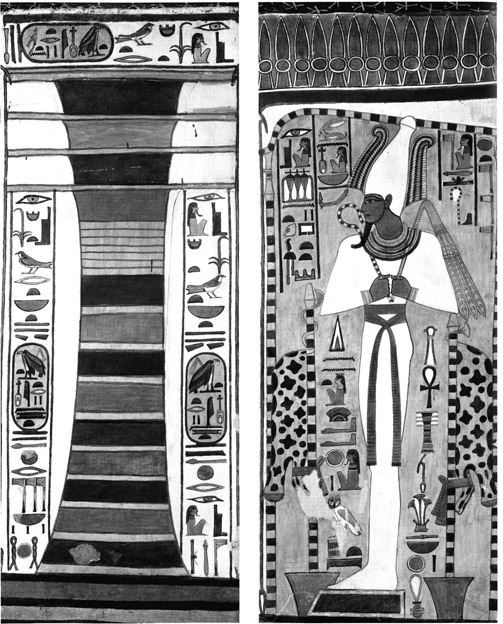
Djed Pillar and Osiris.
Embodying
OSIRIS
THE SECRETS OF
ALCHEMICAL
TRANSFORMATION
Thom F. Cavalli, PhD

Learn more about Thom F. Cavalli and his work at www.cavallibooks.com, www.alchemicalpsychology.com, and www.facebook.com/anandvichara
Find more books like this at www.questbooks.net
Copyright 2010 by Thom F. Cavalli, Ph.D.
First Quest Edition 2010
Quest Books
Theosophical Publishing House
PO Box 270
Wheaton, IL 60187-0270
Without limiting the rights under copyright reserved above, no part of this publication may be reproduced, stored in or introduced into a retrieval system, or transmitted, in any form, or by any means (electronic, mechanical, photocopying, recording, or otherwise), without the prior written permission of the publisher of this book.
The scanning, uploading, and distribution of this book via the Internet or via any other means without the permission of the publisher is illegal and punishable by law. Please purchase only authorized electronic editions, and do not participate in or encourage electronic piracy of copyrighted materials.
While the author has made every effort to provide accurate telephone numbers and Internet addresses at the time of publication, neither the publisher nor the author assumes any responsibility for errors or for changes that occur after publication. Further, the publisher does not have any control over and does not assume any responsibility for author or third-party websites or their content.
Cover image: Mural painting of Osiris. Burial chamber from 19th dynasty. Copyright DeA Picture Library/Art Resource, NY.
Cover design by Margarita Reyfman.
Library of Congress Cataloging-in-Publication Data
Cavalli, Thom F. (Thom Frank).
Embodying Osiris: the secrets of alchemical transformation / Thom F. Cavalli.1st Quest ed.
p. cm.
Includes bibliographical references.
ISBN 978-0-8356-0880-0
1. Osiris (Egyptian deity) 2. AlchemyPsychological aspects. 3. Jungian psychology. I. Title.
BL2450.O7C39 2010
| 299.312113dc22 | 2010017986 |
ISBN for electronic edition, e-pub format: 978-0-8356-2071-0
5 4 3 2 1 * 10 11 12 13 14
To my beloved sister and brother, Dyan and Robert
The decisive question for man is: Is he related to something infinite or not?... In the final analysis, we count for something only because of the essential we embody, and if we do not embody that, life is wasted.
Carl Gustav Jung
Lifes raison dtre is to become conscious of oneself; then the aim of life is cosmic consciousness, the consciousness of the All, beyond transient and mortal contingencies. To accept and to attempt to fathom this, the teaching of all revealed religions, is worth living for.
R. A. Schwaller de Lubicz
ILLUSTRATIONS
Frontispiece. Djed Pillar and Osiris
PRONUNCIATION KEY FOR MAJOR EGYPTIAN GODS AND PHARAOHS
GODS
Abubis | [uh-noo-bis] |
Apopis | [uh-poh-is] |
Aten | [ahtn] |
Atum | [ah-tuh m] |
Hathor | [hath-awr] |
Horus | [hawr-uh s, hohr-uhs] |
Isis | [ahy-sis] |
Nephthys | [nef-thees] |
Nun | [noon] |
Nut | [noot] |
Osiris | [oh-sahy-ris] |
Ptah | [ptah] |
Ra | [rah, ray] |
Sekhmet | [sek-met] |
Seth | [seth] |
Tefnut | [tef-noot] |
Thoth | [thohth, toht, thahth] |
Note: Goddesses names always end in et. Most names, however, have been changed from the original language (Coptic, Greek, Latin, etc.) and therefore do not follow this rule. Isiss name, for example, was originally Aset, Hathor was Het, and Neith was Net.
PHARAOHS
Akhenaten | [ak-nat-n, a-ke-na-ten] |
Hatshepsut | [hat-shep-set] |
Imhotep | [im-hoh-tep] |
Ptolemy | [tol-uh-mee] |
Ramses | [ram-seez] |
Tutankhamun | [toot-eng-kah-muh n] |
The above pronunciation key is only meant as a guide to enliven the readers experience. We do not know how these names were actually pronouncedthey changed over time and place. Pronunciations are different according to each countrys language. At best, this is how people in the English-speaking world pronounce these names today.
FOREWORD
We are separated from those who came before us not only by time but by sensibility. The ancient Romans are reasonably close; we can gaze at their marble busts and see them almost as people we know. The ancient Greeks and Hebrews are a step further removed, although we can still recognize in them the lineaments of our cultural ancestors. But when we come to Egypt, we hit a wall. The mind of every literate person is populated with images of Egyptpyramids, mummies, bird-headed gods, ladies with eyelids green from ground malachiteand scholars have probed into the life of that nation with every tool of ingenuity. We know which Pharaoh ascended the throne in which year; we know what the hieroglyphs say and even how much beer the Egyptians drank. But for all this, their world, haunting, mysterious, ever-beckoning but ever-receding, holds us at a distance. We approach it as we might approach the sun setting in a Saharan landscapewe appear to come closer, but we never do.
One of the strangest and most distinctive features of Egyptian art reinforces this impression. Their paintings depict the faces of figures in profile, while the eyes remain frontal. We see only one side of the face and one eyebut that eye appears to be gazing at the viewer. Thus it is with Egypt as a whole: it confronts us directly with its single eye (an ancient symbol of spiritual perception), but half its face is always averted. The ceaseless flow of books, excavations, museum exhibits, and bizarre theories of alternative history constantly promises to reveal this hidden side of the face of Egypt, but somehow it never does.
Thom Cavallis Embodying Osiris highlights another way of looking at the ancient Egyptians. It takes their central myththe death and resurrection of Osirisas an illustration of certain processes that occur both in the universe and in the human psyche. As Cavalli suggests, it may be more accurate to see the Egyptian gods not so much as divine personages ruling over certain isolated spheres of reality, as the Greeks and Romans of late antiquity did (so that Mars presides over war somewhat like a secretary of defense), but as the embodiments of certain fundamental processes.
To understand this view, we might turn to a work that is as old as the myths of Egypt. The Indian Rig Veda (much of which was composed, probably, in the second millennium BC) includes a hymn to a storm god named Vata. Part of it says, Moving along his paths in the middle realm of space, he does not rest even for a single day. Friend of the waters, first-born keeper of the Law, where was he born? What was he created from? Breath of the gods, embryo of the universe, this god wanders wherever he pleases. His sounds are heard, but his form is not seen. Let us worship the gale with oblation.
Next pageFont size:
Interval:
Bookmark:
Similar books «Embodying Osiris: the secrets of alchemical integration»
Look at similar books to Embodying Osiris: the secrets of alchemical integration. We have selected literature similar in name and meaning in the hope of providing readers with more options to find new, interesting, not yet read works.
Discussion, reviews of the book Embodying Osiris: the secrets of alchemical integration and just readers' own opinions. Leave your comments, write what you think about the work, its meaning or the main characters. Specify what exactly you liked and what you didn't like, and why you think so.

